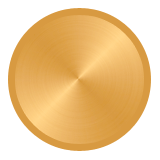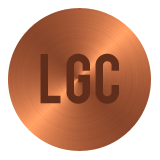AudioQuest Black Lab Subwoofer Cable 3m (Single)
Key Features
- The industry's go-to subwoofer cable
- Integrated grounding cable to prevent problems with ground hum
- Noise-Dissipation acts as shield & absorbs noise before it reaches the ground-connected layer
- Solder-less manufacturing allows choice of materials based on sound instead of machinability
- Flexible PVC jacket ensures durability and manoeuvrability
The AudioQuest Black Lab Subwoofer Cable has become an industry standard for those seeking a high-quality and affordable subwoofer interconnect that delivers outstanding performance. It incorporates the renowned engineering found in AudioQuest cables, including Metal-Layer Noise-Dissipation (NDS) and Solid Long-Grain Copper internal conductors. Additionally, the cable features an integrated grounding wire, effectively preventing any ground hum issues that can occur with subwoofers. With reliability, affordability, and excellent sound quality, this cable is a top choice for subwoofer connections.
Product Ref: 200327
Full Description
View Full DescriptionBlack Lab is the start-off canine-themed interconnect from AudioQuest to connect your active subwoofer to an amplifier or AV Receiver. This interconnect may be viewed as 'entry level' but we'd be more inclined to liken it as a cable suitable for any mid-range active 'woofers in the £200-£800 price range.
AudioQuest's have stayed loyal to their conductor philosophy of solid Long Grain Copper (LGC), a technique that eliminates strand interaction (being more like a long core of solid copper). A smoother and clearer sound is achieved than regular standard-issue OFC cables and contains less oxides, less impurities and fewer grain boundaries (where the end of one meets the start of another).
Top-notch Polyethylene insulation and an integrated system to combat noise are all unmistakable features of AudioQuest Black Lab and rather than soldering RCA plugs to terminate the cable AQ strongly believe in a 'cold-weld' connection to avoid distortion and a better choice of metals that isn't dictated by machinery.
The Black Lab also comes complete with a useful grounding lug, which will help to eliminate any subwoofer hum you may come across. Simply attach one spade lug to the metal chassis of the subwoofer's amplifier block and the other spade to the chassis of the AV receiver or amplifier. Certainly one of the only subwoofer cables to include one at this price point. Excellent attention to detail from AudioQuest!
AudioQuest Black Lab Features

Solid LGC Conductors
Conductor material quality makes a world of difference in the sound of an audio cable. Since the surface of a conductor has 100% current density at all frequencies, the surface most defines the sound quality of the whole conductor. The less complicated grain structure and fewer impurities within Black Lab's LGC copper significantly reduce distortion compared to normal high-purity copper.

Solid Core Conductors
Strand interaction is the single greatest cause of distortion in cable, and one of the easiest to avoid. Whenever current crosses the oxidized contact between bare strands, the signal will be altered. In addition, the magnetic fields of the various strands are constantly interacting, causing confusion (smearing) and causing the contact pressure between strands to be constantly modulated. AudioQuest's solid core conductors are the complete solution to this problem.

AudioQuest Noise-Dissipation System
Noise, in the form of RF energy, is the mortal enemy of good sound. Our environment is more contaminated with RF than ever before due to the huge proliferation of RF radiating devices like computers and mobile phones. Traditionally, RF energy is routed to ground through the use of a 'shield" consisting of either a braided metal or foil. This 'draining' of RF to ground causes a modulation of the ground plane, which in turn causes a form of signal modulation. AudioQuest's Noise-Dissipation System greatly reduces the effect of this modulation. Metal, used in a passive manner, acts as a method of dissipating and reducing the incoming RF. The result is dramatically less modulation of the signal, less distortion and better sound.

Cold-Weld System
Making the perfect connection between conductor and connector is not a simple process. There are three accepted ways to make the connection between a cable and its termination. Solder is by far the most common method of connection. Resistance welding is clearly superior to even the best solder. However, just as solder introduces an inferior layer of differing material, causing distortion and reflections, so does welding. The alloy created at the interface of cable and plug is far superior to solder, but it is still an undesirable intermediary layer. After so much attention to the quality of the conductor and connector, the contact system deserves just as much consideration. AudioQuest's Cold-Weld System solves this problem with a superior connection that insures that the structural integrity of the conductor is kept completely intact. The Cold-Weld System refers to a combination of high pressure at the point of contact and the use of silver impregnated paste.

Foamed Polyethylene Insulation
Any solid material adjacent to a conductor is actually part of an imperfect circuit. Wire insulation and circuit board materials all absorb energy (loss). Some of this energy is stored and then released as distortion. Black Lab uses air-filled Foamed-Polyethylene Insulation on both conductors because air absorbs next to no energy and Polyethylene is low-loss and has a benign distortion profile. Thanks to all the air in Foamed-PE, it causes much less of the out-of-focus effect common to other materials.
Cable Specifications
| Conductor | Long-Grain Copper (LGC) |
|---|---|
| Dielectric | Foamed Polyethylene |
| Jacket | PVC |
| Plug Type | Gold-Plated RCA Male (x2) |
| Shielding | Standard NDS |
| Type | Subwoofer Interconnect |
| Reviews of our service
View all








